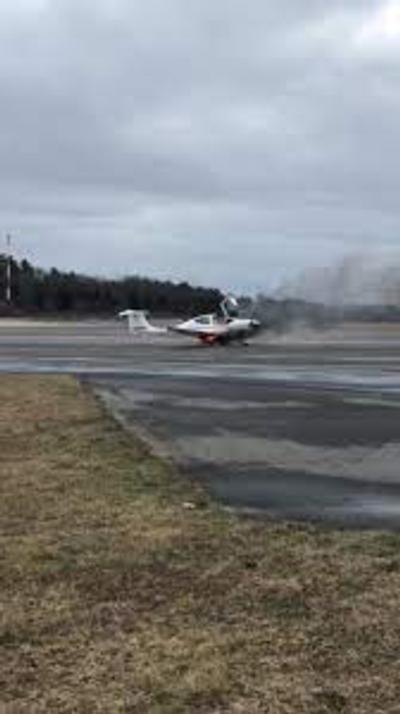Sun, Jan 01, 2023

Location: Portsmouth, New Hampshire
Accident Number: ERA21LA099
Date & Time: Jan 3, 2021
Aircraft: N489RS
Event: Fire/Smoke, Non-impact
Injuries: None
Flight Conducted Under: Part 91, Instructional
The NTSB has completed a report regarding a Diamond DA-40 wheel fire that occurred last year. The long and short of things is that the instructor, performing an aircraft checkout for one of the school’s frequent piper renters, used an excessive amount of braking in the landing roll that led to a small fire. Everyone has been there before, when the meter’s running and the temptation to hurry up and turn around in order to minimize time wasted taxiing an aircraft around.
NTSB Analysis:
“After landing, the flight instructor assumed control of the airplane during the roll, taxied to the hold-short line at the approach end of the runway, and waited for landing traffic. Soon after, the pilot of the landing airplane announced over the tower radio frequency that the airplane holding short was “on fire.” The instructor confirmed that smoke was rising from beneath the right wing and both he and the pilot receiving instruction egressed the airplane without injury.

Examination of video revealed fire emanating from the right main landing gear wheel and brake assembly, wheel pant, and involved the right wing, which was substantially damaged.
Data downloaded from the airplane’s multifunction display revealed high groundspeeds during taxi after landing, and rapid decelerations consistent with hard braking actions before the airplane reached the hold short line. Postaccident examination revealed normal wear of the brake pads and no pre-accident mechanical anomalies. Examination of the fuel cell directly above the right main landing gear wheel and brake assembly revealed that it was intact with no leaks and contained about 15 gallons of fuel. Based on the available evidence, it is likely that the instructor’s high taxi speeds, which required multiple brake applications, resulted in the right brake assembly overheating and catching fire.”
More News
Back-Taxi A term used by air traffic controllers to taxi an aircraft on the runway opposite to the traffic flow. The aircraft may be instructed to back-taxi to the beginning of the>[...]
“Our WAI members across the nation are grateful for the service and sacrifice of the formidable group of WASP who served so honorably during World War II. This group of brave>[...]
“Many aspiring pilots fall short of their goal due to the cost of flight training, so EAA working with the Ray Foundation helps relieve some of the financial pressure and mak>[...]
Blind Speed The rate of departure or closing of a target relative to the radar antenna at which cancellation of the primary radar target by moving target indicator (MTI) circuits i>[...]
Aero Linx: International Airline Medical Association (IAMA) The International Airline Medical Association, formerly known as the Airline Medical Directors Association (AMDA) was fo>[...]
 ANN's Daily Aero-Term (05.19.24): Back-Taxi
ANN's Daily Aero-Term (05.19.24): Back-Taxi Aero-News: Quote of the Day (05.19.24)
Aero-News: Quote of the Day (05.19.24) Aero-News: Quote of the Day (05.20.24)
Aero-News: Quote of the Day (05.20.24) ANN's Daily Aero-Term (05.20.24): Blind Speed
ANN's Daily Aero-Term (05.20.24): Blind Speed ANN's Daily Aero-Linx (05.20.24)
ANN's Daily Aero-Linx (05.20.24)




